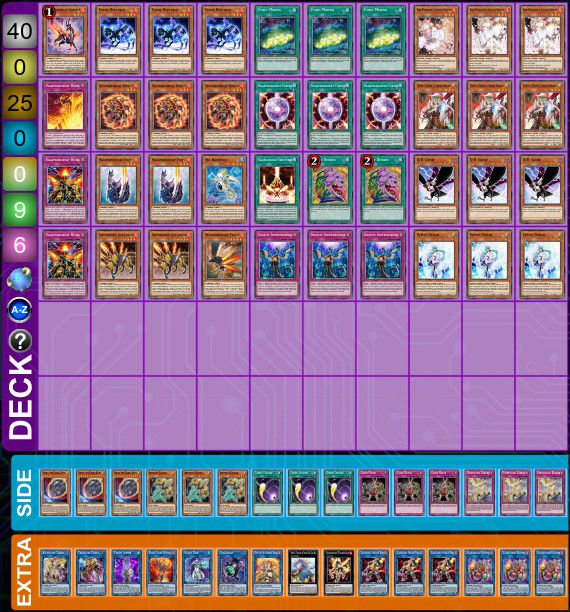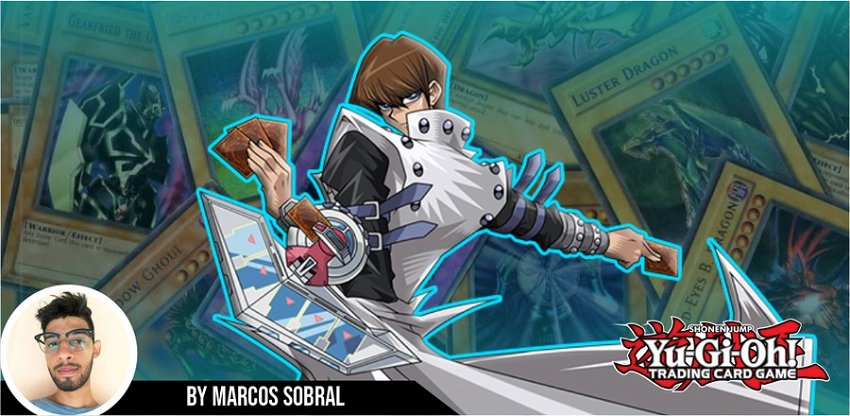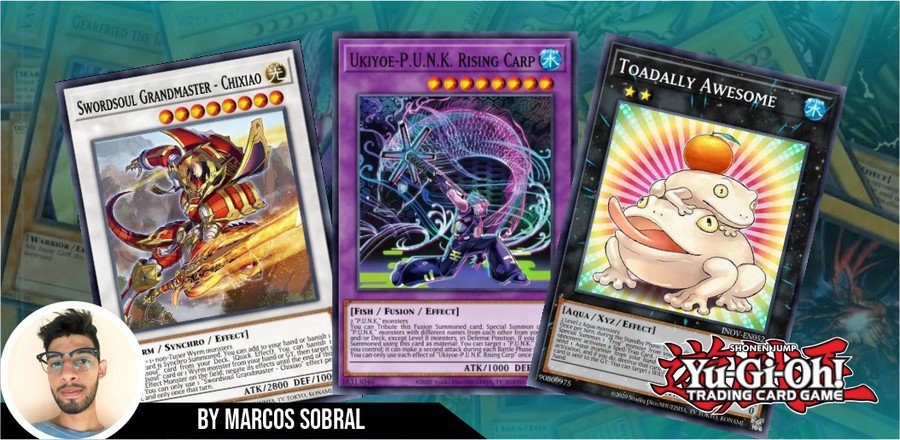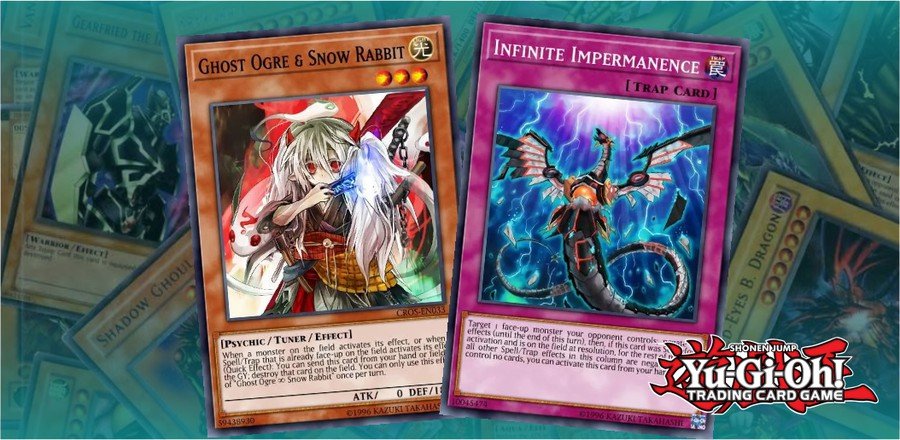Introduction
The first step in building a Yu-Gi-Oh! deck is choosing the strategy you intend to use. It's not necessary to think about each point from scratch, as there are archetypes, which are a group of cards that follow a common strategy and were created to work together. There are also decks based on a particular Monster Type or Attribute, and even decks that mix two or more archetypes.
Although the archetypes follow a pre-defined strategy, this doesn't mean that all decks of the same archetype are the same, since the choice of cards that will complement the deck can greatly influence the way you play.
The Deck Building
A Yu-Gi-Oh! deck is divided into 3 parts:
- Main Deck (with 40 to 60 cards): this is your deck itself, it is where you draw your cards to add to your hand, and it is recommended that you keep it as close as possible to the minimum limit of 40 cards, since in a deck with many cards it is much more difficult to draw your best cards when you need them most;
- Extra Deck (with up to 15 cards): Contains only your Fusion, Xyz, Synchro and Link monsters. You will be able to summon them during the duel by fulfilling certain conditions. You can have up to 15 cards in this deck, and they don't count towards the 40-card minimum limit in your Main Deck;
- Side Deck (with up to 15 cards): consists of “spare” cards, which you can use to make changes to your deck after each duel in a match, in order to modify your strategy or place cards that interact better against your opponent.
In their rule books, Konami recommends that you use 20 Monsters, 10 Spells, and 10 Traps in your Main Deck to keep it balanced, but in practice these numbers don't work very well. In fact, each deck requires a different number of card types to work. Ideally, you should divide the Main Deck into two large groups: Engine and Tech Cards.
Your Engine is made up of the cards of your archetype and also by other cards that have synergy with your archetype. Staples that help with deck consistency are also included in this group.
The Tech Cards group is formed by the various Staples that you can use, whether they are hand traps, cards to break the field, floodgates, among other cards that can interact with the opponent. Most competitive decks use around 12 Tech Cards and that's a good number to base yourself on — but it's not a rule, since the number of Tech Cards will depend on the number of cards needed for your Engine to work well.
To deepen the explanation, I'll use the Salamangreat deck I'm using to play online as a base.
Main Deck
Engine
Monsters
In this deck, I'm using 13 monster cards, being 9 Salamangreat monsters and 4 generic monsters for Cyberse Type, which have synergy with the deck.
The main monster in the Main Deck is Salamangreat Gazelle, which is currently limited to 1 copy. The deck also has 3 copies of Salamangreat Spinny, 2 copies of Salamangreat Foxy, 2 copies of Salamangreat Jack Jaguar and 1 copy of Salamangreat Falco.


The generic Cyberses used in the deck are: 3 copies of Flame Bufferlo and 1 copy of Sea Archiver.

All 13 of these monsters are Cyberse-Type, 10 of them are Level 3 and the other 3 are Level 4. None of this is a coincidence, as any of these monsters can serve as Link material for Salamangreat Balelynx, which usually starts your plays. Plus, Level 3 and Level 4 monsters can be used as Xyz material for Salamangreat Miragestallio and Number 41: Bagooska the Terribly Tired Tapir, respectively.
Spells
The deck has 9 spell cards, namely: 1 copy of Salamangreat Sanctuary; 3 copies of Salamangreat Circle; 3 copies of Cynet Mining; and 2 copies of Pot of Desires.


Except for Salamangreat's field spell, all other spell cards present in the deck are consistency cards, so the deck can reach any of its monsters with ease.
Traps
The Salamangreat archetype has two good trap cards that are being used in the deck, they are: 1 copy of Salamangreat Rage and 2 copies of Salamangreat Roar.

You may notice that the number of trap cards is much lower than that of other types of cards, that's because due to their mechanics, trap cards become slow, thus, using many trap cards is only recommended when you use a deck focused on cards of this type.
Tech Cards
Hand Traps
The total number of Engine cards used in the deck was 25, so there were 15 spaces left to fill with Tech Cards. I chose to fill all these spaces with Hand Traps, as I believe they are the most versatile and useful way to interact with the opponent during a duel.
So, I used 3 copies of each of the cards below:

Ash Blossom & Joyous Spring, Effect Veiler and Infinite Impermanence were chosen because they are the most generic hand traps, so they are good against most decks.
Ghost Ogre & Snow Rabbit was chosen for being the best hand trap against Spright, possibly the best deck in the format. The D.D. Crow, was chosen for being good against decks that rely on the graveyard, like Spright itself and also decks like Branded Despia and Tearlaments.
Extra Deck
The Extra Deck is the most important part in the Salamangreat Deck, as all your Main Deck monsters act as a gear for you to get to your Extra Deck monsters.
Salamangreat Balelynx usually starts your play with its effect to add Salamangreat Sanctuary from your deck to your hand, in addition to protecting your Salamangreat cards from destruction when banishing from the Graveyard. Salamangreat Sunlight Wolf is the main monster in your Deck, as it is responsible for recycling Spell and Trap Cards by adding them from your Graveyard to your hand.
You can also cycle your Fire Attribute monsters — generally, the preference is to bring Salamangreat Gazelle back into your hand after using it, as you can only use one in your deck. In addition, you can also recover an Ash Blossom & Joyous Spring.
Salamangreat Miragestallio is the archetype's Xyz Monster and is also a key player in the Deck's consistency, thanks to its effect of Summoning a Salamangreat Monster directly from the Deck. In addition to being able to return any monster on the field to its owner's hand, if used as a Link Material for the Summon of a Salamangreat monster.

The other Xyz Monster I use in the deck is Number 41: Bagooska the Terribly Tired Tapir, which has two effects. The first is that it cannot be targeted by opponent's card effects when in Attack Position. And finally, its main effect, which reads: While this card is in face-up Defense Position, change all face-up monsters on the field to Defense Position and also negate the activated effects of monsters that were in Defense Position when this effect was activated. Only Link monsters are unaffected by this effect, so when Summoning it, only your opponent will suffer from its effects.

Hiita the Fire Charmer, Ablaze is a Link-2 Generic Fire Attribute that has the effect of Summoning another Fire monster from your opponent's Graveyard to your side of the field, in addition to allowing you to add a Fire monster with 1500 or less defense from your deck to your hand if destroyed by your opponent's cards.

From here, I use two micro engines in the Extra Deck, each one composed of 3 cards and with different objectives: to increase the consistency of the deck and end the duel.
In the first one, I use Linguriboh and Splash Mage to summon Decode Talker Heatsoul, which has the quick effect of drawing a card at the cost of paying 1000 life points. This is yet another way to increase deck consistency and can be used by any Cyberse deck.

The micro engine to end the duel is formed by Update Jammer, Transcode Talker and Accesscode Talker. The objective is to summon Accesscode Talker with 5300 attack points and being able to attack twice. This is a well-known combo which can also be used by any deck made up of Cyberse monsters.

Side Deck
The first few cards in my Side Deck are more Hand Traps: Nibiru, the Primal Being is generally pretty good against combo decks, and while some main decks in the format can play around it, it can still be pretty good useful in some games. The next card is Artifact Lancea, which is also not popular in the format, but I'm using it mainly to face decks that have good matches against Salamangreat, like Floowandereeze, Exosister and any other deck that uses Dimension Shifter, a card that disables the graveyard for two turns, which is bad for Salamangreat.

To deal with control decks or any other deck that can use floodgates, I have a trio of Cosmic Cyclone.

Finally, I also have some trap cards, but they only enter the games I'm sure I'll start. They are: Dimensional Barrier which is excellent against Branded Despia and Swordsoul Tenyi, as well as affecting other decks focused on a single type of summon, except for the Link summon; and Gozen Match which is good against decks that run monsters with varying Attributes, like Spright and Floowandereeze, for example.

Decklist
Here you can check all the cards used in my list, for those who want to try it out:

Conclusion
That's all for today!
If you have any doubts, feel free to leave a comment!














— Comentarios 0
, Reacciones 1
Se el primero en comentar